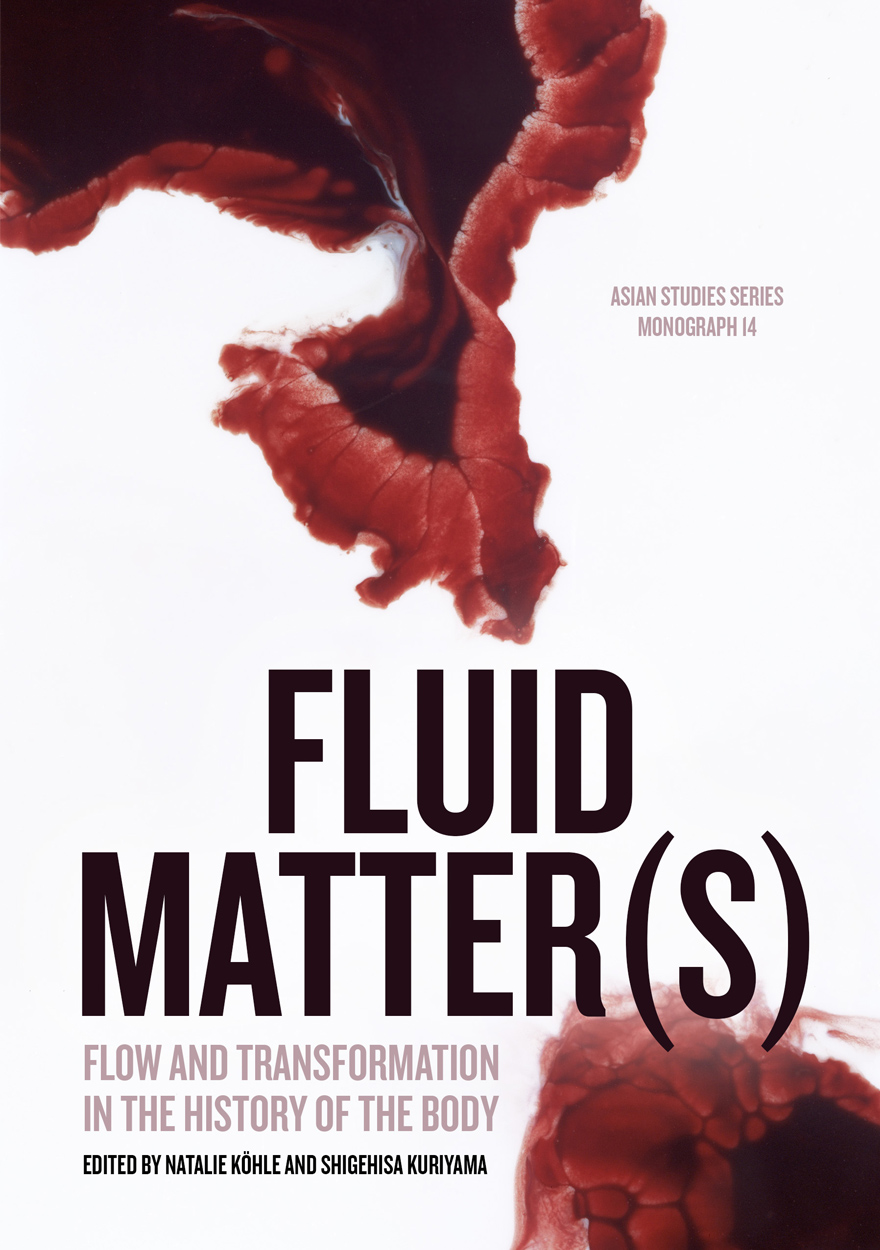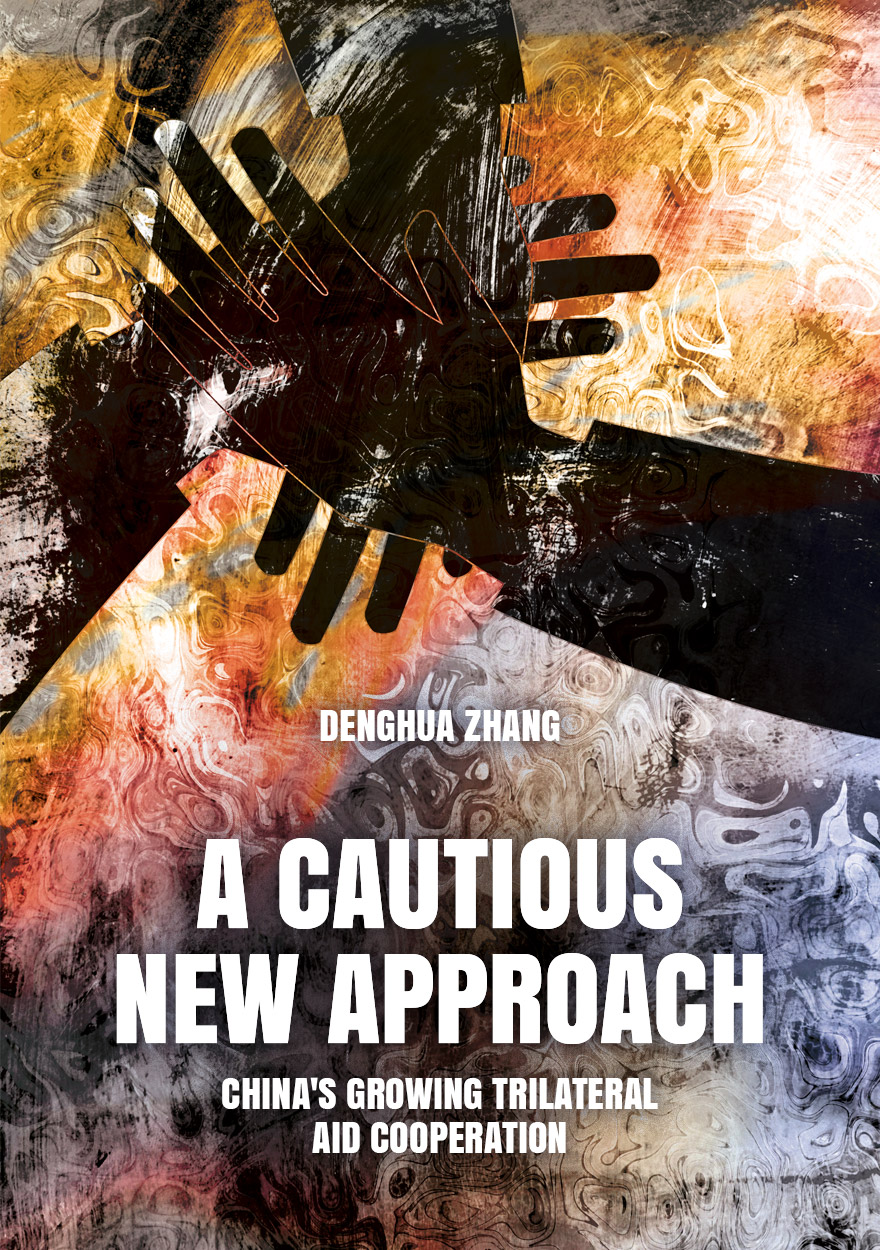Search titles
Displaying results 161 to 170 of 856.

Fluid Matter(s) »
Flow and Transformation in the History of the Body
Edited by: Natalie Köhle, Shigehisa Kuriyama
Publication date: August 2020
Once upon a time, doctors across Eurasia imagined human beings in ways that strike us today as profoundly strange and alien. For over 2,000 years, they worried anxiously about fluids to which our modern doctors spare hardly a thought (such as sweat, phlegm and qi) and they obsessed over details (such as whether a person’s pores were open or closed) whose meaning and vital importance have now largely faded from memory. Through a series of case studies from Europe, India, China, Mongolia and Japan, Fluid Matter(s) suggests ways to make sense of this strange and dimly remembered past, and urges us to reflect anew on the significance of fluids and flows in the history of medicine.
The book also urges us, more generally, to reimagine the way in which we narrate history. The articles here are essays, in the original French sense. They are exploratory trials, experiments to illustrate some of the ways in which digital texts can go beyond the affordances of print. They test visual effects that are inconceivable on a paper page, but that are easily conjured on an electronic screen. Fluid Matter(s) is the first work of its kind: a study that narrates the body’s past in a form that embodies new futures for narrative.
Not available for purchase

Designing Governance Structures for Performance and Accountability »
Developments in Australia and Greater China
Publication date: July 2020
Designing Governance Structures for Performance and Accountability discusses how formal and informal governance structures in Australia, the People’s Republic of China (PRC) and Taiwan may be designed to promote performance and to ensure accountability.
The book presents a selection of papers developed from the Greater China Australia Dialogue on Public Administration’s seventh workshop held in June 2017 hosted by City University of Hong Kong.
Insights are provided on both current developments in the different contexts of the three jurisdictions examined, and on broader institutional and organisational theories. Chapters cover theories of organisational forms and functions in public administration, the ‘core’ agency structures used in the different jurisdictions, the structures used to deliver public services (including non-government organisational arrangements) and other ‘non-core’ agency structures such as government business enterprises, regulatory organisations and ‘integrity’ organisations. A particular emphasis is placed on the institutional arrangements the executive arm of government uses for advising on and implementing government policies and programs. Although the book explores arrangements and developments within very different political governance systems, the purposes of the structures are similar: to promote performance and accountability.
This book is a companion volume to Value for Money: Budget and Financial Management Reform in the People’s Republic of China, Taiwan and Australia (ANU Press, 2018).

Morrison's Miracle »
The 2019 Australian Federal Election
Publication date: July 2020
This book, the 17th in the federal election series and the ninth sponsored by the Academy of the Social Sciences in Australia, provides a comprehensive account of the 2019 Australian election, which resulted in the surprise victory of the Coalition under Scott Morrison. It brings together 36 contributors who analyse voter behaviour, campaign strategies, regional variations, polling, ideology, media and the new importance of memes and digital campaigning. Morrison’s victory underlined the continuing trend toward the personalisation of politics and the loss of trust in political institutions, both in Australia and across western democracies. Morrison’s Miracle is indispensable for understanding the May 2019 Coalition victory, which surprised many observers and confounded pollsters and political pundits.

East Asia Forum Quarterly: Volume 12, Number 2, 2020 »
Publication date: June 2020
How can Asia deal with the triple crises—health, economic and financial—of COVID-19? This issue of East Asia Forum Quarterly focuses on Asia's response.
This Quarterly features an important strategy paper by over a dozen distinguished experts that details a compact for cooperation among Asian countries for managing the immediate impact of the crises, plan for a speedy exit from the economic damage and protect against similar catastrophes in the future.
Our contributors offer a variety of perspectives on Asia’s role in mobilising international cooperation that is needed to deal with the triple crises of COVID-19. Instead of accentuating differences and retreating from openness, the lessons of past crises point to a need to realise the common interest in immunising Asia from a great depression.
Download for free
Not available for purchase

Made in China Journal: Volume 5, Issue 1, 2020 »
Publication date: May 2020
‘Art must not be concentrated in dead shrines called museums. It must be spread everywhere—on the streets, in the trams, factories, workshops, and in the workers’ homes.’
— Vladimir Mayakovsky, 1918
With these words, the great Soviet poet addressed the key question of how to bring art to people and people to art in a new world in which old aristocracies, elites, and their aesthetic privileges were fading away. In the words of art theorist Boris Groys, ‘the world promised by the leaders of the October Revolution was not merely supposed to be a more just one or one that would provide greater economic security, but it was also and in perhaps in even greater measure meant to be beautiful.’ Walking in these steps, the Chinese Revolution was a project of further experimentation and creation in the realm of the relationship between art and the people. The world it created was at once utopian and disfigured, radiant and desolate. While today that world is no longer, the questions it raised about the relationship between the working class, artistic production, and aesthetic appreciation remain with us. This issue of the Made in China Journal offers a collection of essays that examine the ‘work of arts’, intended as the extension of art beyond the confines of the museum and into the spaces of ordinary life and production.
Download for free
Not available for purchase

International Review of Environmental History: Volume 6, Issue 1, 2020 »
Edited by: James Beattie
Publication date: May 2020
International Review of Environmental History takes an interdisciplinary and global approach to environmental history. It encourages scholars to think big and to tackle the challenges of writing environmental histories across different methodologies, nations, and time-scales. The journal embraces interdisciplinary, comparative and transnational methods, while still recognising the importance of locality in understanding these global processes.
The journal's goal is to be read across disciplines, not just within history. It publishes on all thematic and geographic topics of environmental history, but especially encourage articles with perspectives focused on or developed from the southern hemisphere and the ‘global south’.
Download for free
Not available for purchase

China Dreams »
Publication date: April 2020
The year 2019 marked a number of significant anniversaries for the People’s Republic of China (PRC), each representing different ‘Chinese dreams’. There was the centennial of the May Fourth Movement — a dream of patriotism and cultural renewal. The PRC celebrated its seventieth anniversary — a dream of revolution and national strength. It was also thirty years since the student-led Protest Movement of 1989 — dreams of democracy and free expression crushed by government dreams of unity and stability. Many of these ‘dreams’ recurred in new guises in 2019. President Xi Jinping tightened his grip on power at home while calling for all citizens to ‘defend China’s honour abroad’. Escalating violence in Hong Kong, the ongoing suppression of Uyghurs in Xinjiang, and deteriorating Sino-US relations dominated the headlines. Alongside stories about China’s advances in artificial intelligence and geneticially modified babies and its ambitions in the Antarctic and outer space, these issues fuelled discussion about what Xi’s own ‘China Dream’ of national rejuvenation means for Chinese citizens and the rest of the world.
The China Story Yearbook: China Dreams reflects on these issues and more. It surveys the dreams, illusions, aspirations, and nightmares that coexisted (and clashed) in 2019 in China and beyond. As ever, we take a cross-disciplinary perspective that recognises the inextricable links between economy, politics, culture, history, language, and society. The Yearbook, with its accessible analysis of the main events and trends of the year, is an essential tool for understanding China’s growing power and influence around the world.

The Bugis Chronicle of Bone »
Publication date: April 2020
The Bugis Chronicle of Bone is a masterwork in the historiographical tradition of South Sulawesi in Indonesia. Written in the late seventeenth century for a very specific political purpose, it describes the steady growth of the kingdom of Bone from the fourteenth century onwards. The local conquests of the fifteenth century, closely linked to agricultural expansion, give way to the long conflict with the Makasar state of Gowa in the sixteenth century. Forced Islamisation in 1611 is dealt with in detail, leading finally to first contact with the Dutch East India Company in 1667.
This edition presents a diplomatic version of the best Bugis text, together with the first full English translation and an extensive introduction covering the philological approach to the edition, as well as the historical and cultural significance of the work.
A structure based on the reigns of successive rulers allows for stories about the circumstances of each ruler and, particularly, the often dramatic processes and politics of succession. The chronicle is a rich source for historians and anthropologists seeking to understand societies beyond Europe. It provides a window on to this Austronesian-speaking society before the impact of significant external influences. This is history from within, covering more than three centuries.

A Cautious New Approach »
China's Growing Trilateral Aid Cooperation
Authored by: Denghua Zhang
Publication date: March 2020
‘As a student of international relations and a former diplomat, Zhang brings the insights of a practitioner and the eye of scholar to explain why Chinese actors choose to engage in aid cooperation with traditional donors in the Asia-Pacific. This book is among the first to take a holistic approach to understanding the motivations of the many agencies involved in China’s aid program, and it will challenge the expectations of many readers.’
—Dr Graeme Smith, The Australian National University
‘This book breaks new ground by examining a little-known dimension of China’s foreign policy: trilateral aid cooperation. Denghua Zhang sets this highly original analysis in the context of the new assertiveness of Chinese foreign policy under Xi Jinping, the China International Development Cooperation Agency established in 2018, and the Belt and Road Initiative, which now serves as the framework for Chinese overseas aid and engagement. At a time when the debate in the West about the rise of China has intensified, not always knowledgeably, this book fills an important gap in our understanding of China in Southeast Asia and the Pacific.’
—Dr Stewart Firth, The Australian National University
‘This thoroughly researched work examines trilateral cooperation as a new and interesting aspect of China’s growing international aid program, and as a window into the changing nature of that program as well as the wider foreign policy in which it is embedded. The broad themes and topics discussed are clearly significant, ultimately touching on one of the most important international issues of our time, the implications of the rise of China for a long-established Western-dominated international system.’
—Prof. Terence Wesley-Smith, University of Hawai‘i

East Asia Forum Quarterly: Volume 12, Number 1, 2020 »
Publication date: March 2020
The changing geopolitical context compels middle powers to act. Countries have responded by forming explicit alliances, building upon hedging strategies or altering their leanings from one great power to another. The need for collective action is more urgent than ever to deal with emerging regional and global challenges.
This issue of East Asia Forum Quarterly looks at middle powers and the range of priorities they have. Some are focused on their domestic priorities while others are more eager to shape the political, economic and security dimensions in the region. Our contributors offer a variety of perspectives on the challenges that middle powers face and identify the call of middle-power vision in defending the rules-based order.
EAFQ 12.1 is dedicated to Aileen S.P. Baviera, founding president of Asia Pacific Pathways to Progress, who died on 21 March 2020, from pneumonia related to COVID-19.
East Asia Forum Quarterly grew out of East Asia Forum (EAF) online, which has developed a reputation for providing a platform for the best in Asian analysis, research and policy comment on the Asia Pacific region in world affairs. EAFQ aims to provide a further window onto research in the leading research institutes in Asia and to provide expert comment on current developments within the region. The East Asia Forum Quarterly, like East Asia Forum online, is an initiative of the East Asia Forum (EAF) and its host organisation, the East Asian Bureau of Economic Research (EABER) in the Crawford School of Economics and Government in the College of Asia & the Pacific at The Australian National University.
Download for free
Not available for purchase



